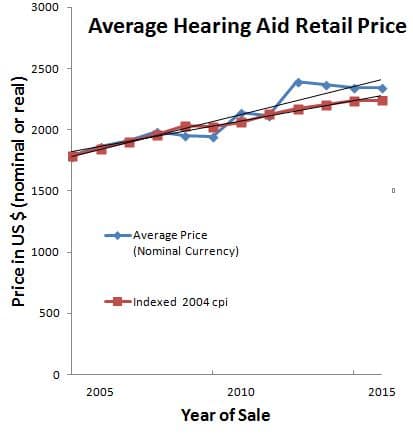ALEXANDRIA, VIRGINIA — The American Academy of Otolaryngology–Head and Neck Surgery (AAO-HNS) published an updated clinical practice guideline this week on the diagnosis and treatment of cerumen (earwax) impaction. Additionally, the updated guidelines offer important patient information on the “dos and don’ts” of managing earwax and healthy ear care.
“This update is significant because it not only provides best practices for clinicians in managing cerumen impaction, it is a strong reminder to patients that ear health starts with them, and there are many things they should do as well as many things that they should stop doing immediately to prevent damage to their ears” –Seth R. Schwartz, MD, MPH, Guideline Update Group Chair
According to the press release, the organization believes that there is a desire by many people to clean their ears because they believe earwax indicates uncleanliness, but that this “misinformation leads to unsafe ear health habits.”
The normal process of the body making wax and pushing the old wax out is continual, but at times the ear’s self-cleaning process might not work very well and can lead to a buildup of earwax. When this occurs, earwax can collect and block, or partly block, the ear canal.
Impacted earwax can result in a range of symptoms including, but not limited to: ear pain, itching, feeling of fullness in the ear, hearing loss and tinnitus.
It is believed that excessive or impacted cerumen is present in 1 in 10 children, 1 in 20 adults, and more than one-third of the geriatric and developmentally delayed populations.
According to the report, approximately 12 million people annually seek medical attention for problematic cerumen.
What to do About Earwax?
AAO-HNS offers the following list of dos and don’ts for clinicians to further educate patients about cerumen impaction:
- DON’T overclean your ears. Excessive cleaning may irritate the ear canal, cause infection, and even increase the changes of cerumen impaction.
- DON’T put anything smaller than your elbow in your ear. Your mother was right! Cotton swabs, hair pins, care keys, toothpicks…these can all injure your ear and may cause a laceration (cut) in the ear canal, a perforation (hole) in the eardrum, and/or dislocation of the hearing bones, leading to hearing loss, dizziness, ringing, and other symptoms of ear injury.
- DON’T use ear candles. There is no evidence that they remove impacted cerumen, and candling can cause serious damage to the ear canal and eardrum.
- DO seek medical evaluation if you have symptoms of hearing loss, ear fullness, and ear pain if you are not certain that they are from cerumen.
- DO ask your provider about ways that you can treat your cerumen impaction at home. You may have certain medical or ear conditions that may make some options unsafe.
- DO seek medical attention with ear pain, drainage, or bleeding. These are not symptoms of cerumen impaction and need further evaluation.
The primary purpose of the updated guideline is to help clinicians identify patients with cerumen impaction who may benefit from intervention.
The update is currently endorsed by several organizations, including the American Academy of Family Physicians (AAFP), American Academy of Pediatrics (AAP), American Geriatric Society (AGS), American Neurotology Society (ANS), American Otological Society (AOS), American Society of Geriatric Otolaryngology (ASGO), and Society of Otorhinolaryngology and Head-Neck Nurses (SOHN) and the American Speech-Language-Hearing Association (ASHA).
*featured image adapted from HuffPost








Once again, the AAO-HNS shows ZERO regard for our profession. Under “Who can I see?” they list only PCPs (who usually just have a nurse or MA do the irrigation) and ENTs, no mention of audiologists anywhere in the guidelines. We are far better trained/skilled than any PC nurse or MA! Shame on you!
Hi Renate,
You are certainly correct in the vast majority of cases, audiologists are much better trained and prepared for cerumen removal than a nurse or MA. We can’t seem to find the specific section you are referring to, but do see mention of generic term “health provider” when discussing removal on the patient “dos and don’ts”.
In addition to several medical doctors, AAA Board member, Bopanna Ballachanda, PhD, is listed among the new AAO-HNS guideline study authors.
While I entirely agree with your protest I have one of my own and a specific “Shame On You” tailored to your exact size and ready to wear!
In my youth many of my friends’ parents were physicians. If I needed to see a specialist of any kind all it took was a few phone calls. Today an undiagnosed neurological condition similar to very acute MS has me fully disabled. It takes days just to arrange transportation. I tried and because I’ve never seen an audiologist I can’t even get one to take my call! Im going with an OTC product to hopefully resolve the issue. Maybe if “you” were accessible your protest would mean something!